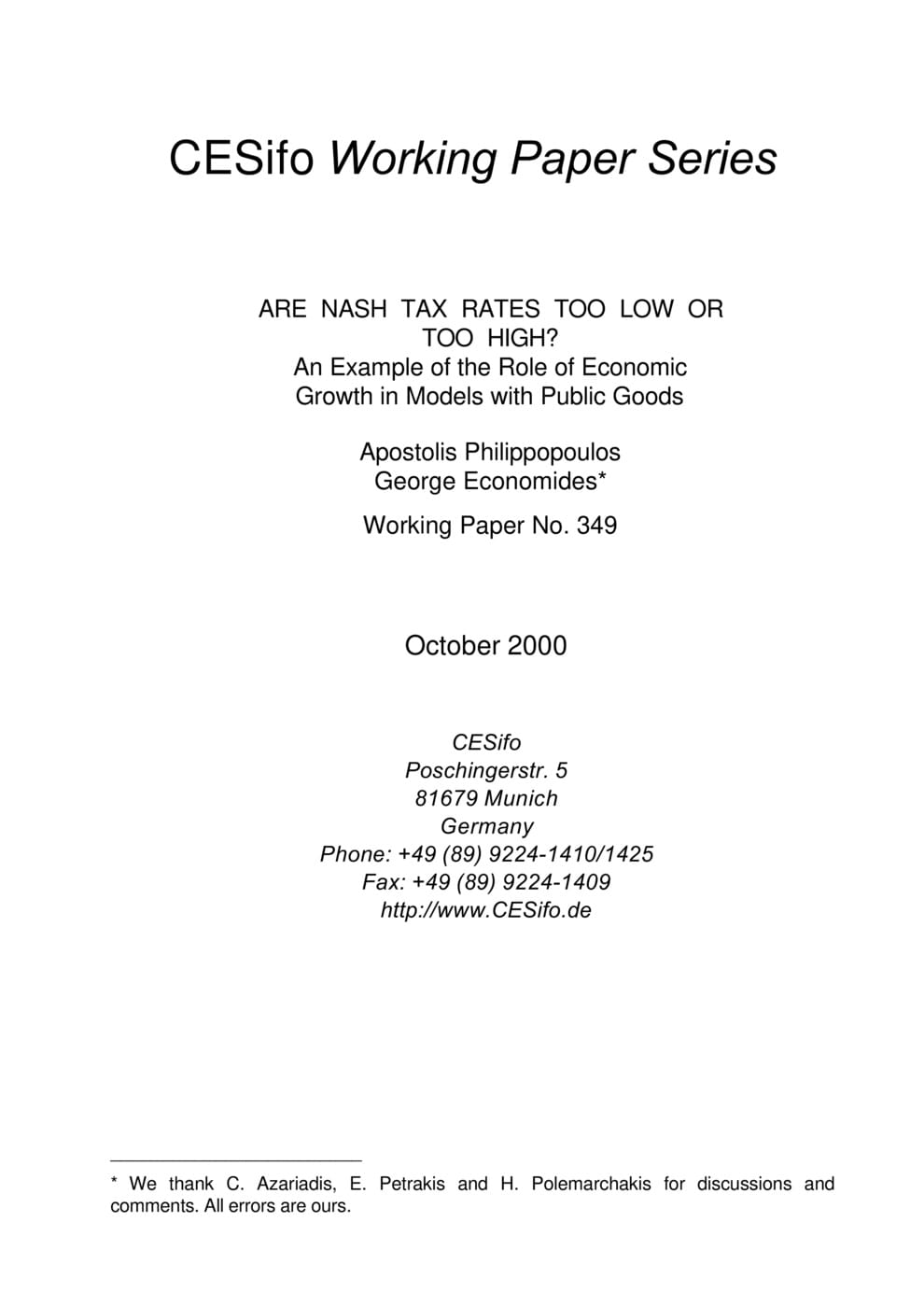Are Nash Tax Rates too Low or too High? An Example of the Role of Economic Growth in Models with Public Goods
CESifo, Munich, 2000
CESifo Working Paper No. 349

We reconsider the conventional wisdom that, in the presence of public goods and distortionary taxation, Nash tax rates are inefficiently low due to free riding. We use a model in which the public good is natural resources. Specifically, a general equilibrium model of a world economy, in which there is long-term growth and world-wide environmental quality has public good features. We show that the type of the spillover effect from one country/player to another (and hence whether we under-tax, or over-tax, in a Nash equilibrium relative to a cooperative one) can be reversed when we introduce dynamics. In particular, the spillover effect changes from positive to negative once the same model allows for economic growth. This implies that, when the economy grows, Nash pollution tax rates are inefficiently high. This happens because in a growth model, medium- and long-run capital tax bases are elastic. In our AK growth model, the long-run effect on growth and tax bases more than outweighs any short-run free rider effects, and therefore Nash tax rates are too high.